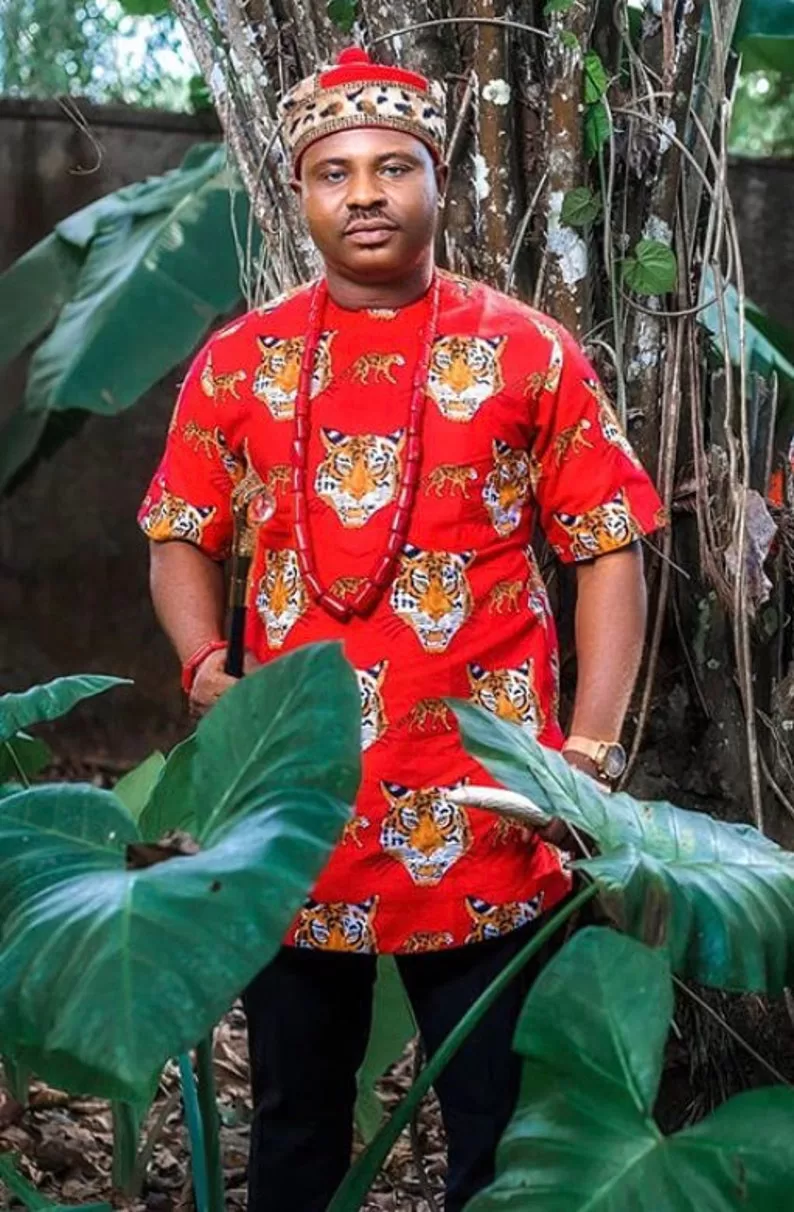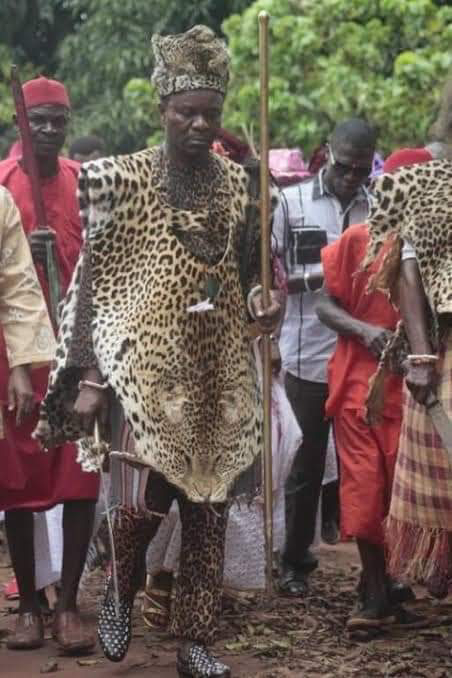By Joy Chinecherem
If the southeastern people of Nigeria have a flag it will be the Isiagu. It is not yet an Igbo occasion if you don’t see one or two persons looking royal and classy decked out in the Isiagu attire.
The Isiagu is a pullover tunic made of high-quality suede material with lion head designs scattered on the material. It is a peculiar material to the Igbo people, originally worn only during titling ceremonies, hence why it is also called Chieftaincy. The Isiagu was not just exclusive to men, but to titled men back in the day, with the advent of watering down of our cultures, it became popular with the menfolk.
Sometime in the era of the 2000s, women wearing Isiagu became a thing, albeit frowned upon making it a topic of debate each time a beautiful picture of a lady adorned in the isiagu pops up online, This begs the question Who is the Isiagu material made for?
The Story Behind The Isiagu?
In the past, it was rare to see people wearing the isiagu attire. However, it seems that millennials either don’t follow this rule or are not informed about it. Understanding the history surrounding this clothing could help to clear up any confusion.
Isi-agu means Head of Leopard, but the garment itself depicts the head of a lion instead. One may wonder why it is not called Isi-Odum since the lion is translated as Odum in Igbo, while the Leopard is called Agu.
In ancient Igbo society, hunting was a respected profession for men. As a result, most Igbo homes had dried animal skin hanging at the entrance of their obi, displaying trophies from hunting. The most sought-after trophy was the skin of the leopard, which was hung there in all its majestic, spotted glory.

The lion has no special recognition in Igbo cultural systems. Ancient Igbos likely did not even have any or much contact with lions as a species. Whereas leopards inhabit rainforests (although they are very adaptable and thrive in other vegetation), lions inhabit mainly savannah or grasslands. Savannah vegetation does not exist (and likely never existed) in Igboland. Igboid areas sit generally on the lowland rainforest.
A lion can occasionally stray into a rainforest or can refuge there if persecuted in its usual habitat. It must have been in such circumstances that Igbos learned about the lion. Yet that was not enough to diminish their fascination for the leopard, a beast with which they had contended for thousands and thousands of years.
The leopard was highly regarded by the people of ancient Igbo as the King of the Forest. It was the most fearless animal they encountered during their hunting expeditions. The ancient Igbo revered the leopard as their totemic animal, symbolizing strength, agility, boldness, and courage. That is why the Igbo language has numerous similes, metaphors, adages, and proverbs that use the word “agụ” to illustrate positive energy and abilities, such as “omekagụ” and “agụnwa.” Many Igbo families and communities proudly took their names and sobriquets after “agụ,” like “Umuagụ,” “Amagụ,” “Dimagụ,” “Eziagụ,” and “Duruagụ.”
In the past, Igbo men considered it a great achievement to kill a leopard as there were no guns available. Only the bravest and most noble men were allowed to wear the leopard’s skin as a symbol of their courage. It was a rare sight and only kings, cabinet chiefs, and titled men were privileged to wear it. This is how Isiagu became a symbol of bravery and respect, reserved for a specific class of people.
However, over time, cultures evolved, and with the arrival of the Europeans for trade, there was a fusion of cultures that changed the Isiagu. It was soon transformed to resemble the Englishman’s tunic.

The Majestic Isiagu, Proudly Displaying the Iconic Leopard Head
Gradually, the Isiagu was transformed and assimilated, it changed from a leopard to a lion influenced heavily by the modern-day popular culture. The rest of the world considers the Lion ‘King of the Jungle’, a symbol of ferocity and strength as was depicted in the bible. Between the colonialization and imbibing of the Western way, the Isiagu shifted from the Leopard to what we have today. Nevertheless, the original isiagu exists and still stands out.

When controversies arise today about who should or should not wear the Isiagu or what is considered disrespectful to it, we should also put into consideration that we have long departed from the isiagu of our ancestors to what we have today.
Post Disclaimer
The opinions, beliefs and viewpoints expressed by the author and forum participants on this website do not necessarily reflect the opinions, beliefs and viewpoints of Anaedo Online or official policies of the Anaedo Online.


